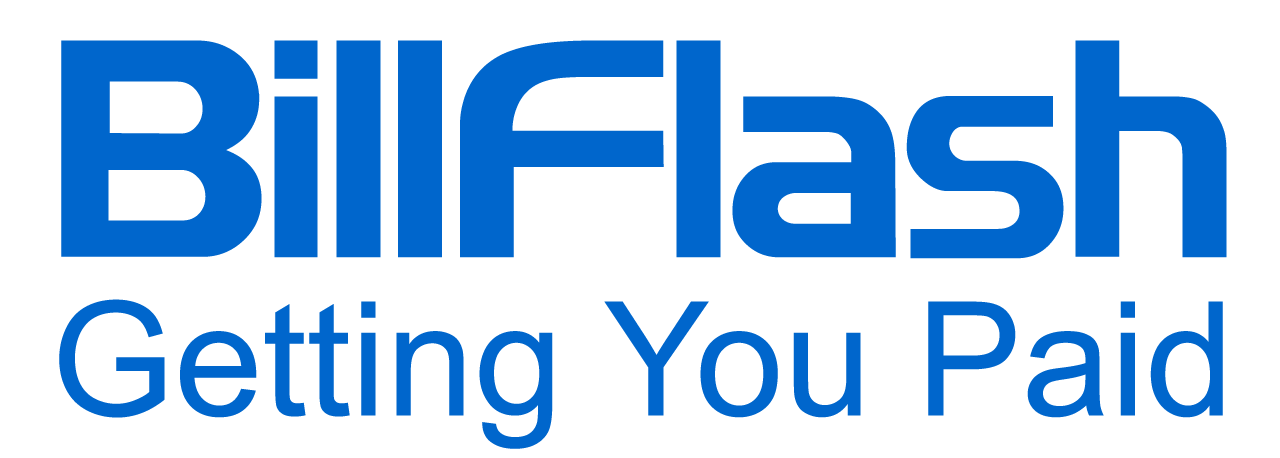Discover effective medical debt collection strategies that protect patient relationships while maximizing your practice’s revenue recovery.
Medical debt collection is evolving fast, and many healthcare providers remain uncertain about the practices they may use and the strategies they should follow. In early 2025, the Consumer Financial Protection Bureau (CFPB) finalized a major rule that prevents medical debt from showing up on credit reports. This change could have transformed how providers approach collections. However, a federal court vacated this rule in July 2025, ruling that the CFPB exceeded its authority under the Fair Credit Reporting Act (FCRA).
As of September 2025, this decision keeps medical debt reporting under longstanding protections and emphasizes the ongoing need for careful compliance. The regulatory environment remains challenging for providers trying to recover legitimate debts while maintaining positive patient relationships. High-deductible health plans and rising out-of-pocket costs increase patient financial responsibility. However, the following insights can help your practice balance revenue recovery while maintaining strong patient relationships.
Background on the CFPB Ruling
Concerns about the impact of medical debt on consumers' finances led to the CFPB's action. In June 2024, the agency proposed changes to Regulation V, which enforces the FCRA, to close a loophole that lets creditors consider medical debt when making lending decisions. The rule, finalized on January 7, 2025, would have stopped consumer reporting agencies from including medical bills on credit reports and restricted lenders from using the data.
The CFPB estimated this would remove approximately $49 billion in medical debt from the credit reports of nearly 15 million Americans, potentially increasing average credit scores by 20 points and leading to 22,000 additional mortgage approvals a year. As the Director at the time, Rohit Chopra, noted, “Medical bills on credit reports too often are inaccurate and have little to no predictive value when it comes to repaying other loans“. However, industry groups, including the Consumer Data Industry Association and credit unions, challenged the rule in court, arguing it exceeded the CFPB's authority.
On July 11, 2025, U.S. District Judge Sean Jordan in the Eastern District of Texas vacated the rule in its entirety, stating that “every major substantive provision of the Medical Debt Rule” overreached the agency's powers under the FCRA. The ruling also clarified that the FCRA preempts state laws attempting similar bans.
The court's decision means medical debt can still be reported to credit bureaus, but this doesn't mean it's a free-for-all. What it does mean is that there is now an environment where providers must carefully navigate what they can and cannot do when it comes to medical debt collection and reporting.

Current Medical Debt Collection Rules
Although the CFPB's ban was struck down, other important rules still play a role in medical debt collection and reporting. For example, all three major credit bureaus (Equifax, Experian, and TransUnion agreed in 2022 to stop including certain medical debts on credit reports. Specifically:
- Debts under $500: Since 2023, unpaid medical bills less than $500 (and any paid medical collections) have not been reported to credit bureaus. This means small balances are effectively exempt from credit reporting.
- Delayed reporting: Reporting is postponed for at least one year after the debt becomes delinquent. This grace period provides an opportunity for insurance processing, billing issues, or financial settlements, reducing the likelihood of inaccurate reporting.
- Accuracy and documentation: Federal law treats reporting medical debt as an “extraordinary collection action,” imposing strict notice and timing requirements. Nonprofit hospitals, for example, have to notify patients and honor waiting periods before listing debt. The Fair Credit Reporting Act (FCRA) and CFPB guidance require that debts be verified and accurate before reporting.
While credit reporting can help collections, these rules closely control it to protect patients from unfair or premature reporting.
What Providers Can and Can't Do Today
Given the above, providers should understand the dos and don'ts of medical debt collection and reporting:
What Providers CAN Do
Report medical debts over $500 to credit agencies, but only after the waiting period and with complete documentation. If you have accurate records and notify patients, collection agencies can report these debts on your behalf. You can also collect unpaid bills by calling, sending patient statements, or using collection agencies, as long as you follow the law and treat patients respectfully.
What Providers CANNOT Do
You cannot report paid medical debts, medical debts under $500, or unpaid medical debts less than a year old. You also cannot use aggressive tactics that violate the Fair Debt Collection Practices Act. Medical debt collection best practices recommend avoiding submitting accounts that are under insurance review or in active dispute; however, specific requirements vary by state.
Gray Areas Require Extra Caution
Some situations require careful consideration. Accounts that have gone delinquent without any patient outreach or clear explanation create risks. If providers never clearly sent a bill to a patient or explained available financial aid options, rushing to list a debt can create compliance issues and harm patient relationships. In such situations, prioritize communication and resolution before anything else.
Clear billing and communication are essential for effective medical debt collection. Practices should ensure patients understand their bills and available assistance, such as payment plans or payment coupons, before debts escalate. When providers handle billing proactively and transparently, there's less need to turn to credit reporting. When providers do report debt, following the rules closely (i.e., waiting periods, verification, notices) ensures compliance. The choice to report should be a strategic one for each patient account, not an automatic step.
Why Control Matters for Providers
Providers deserve to take the lead in collections. After all, how a provider handles unpaid bills can shape patient trust and the practice's reputation. Over-reporting debt can test patient relationships. For example, a patient upset by a sudden notification of a reported debt on their credit report may no longer view the provider as a partner. On the other hand, ignoring all collections can hurt revenue and compliance. The best path for medical debt collection comes from balanced, patient-by-patient decisions.
Having control means providers can weigh each unique situation. Providers can consider the patient's history, the legitimacy of the charge, any financial hardship, and the likelihood of recovery. If an automatic or agency-driven approach is used, it can report every delinquent account without detail. This means reports may not include important information, such as the reason for the late payment or the patient's financial situation. It will likely just show a one-size-fits-all negative mark.
This risks harming compliant patients who may need more time or financial assistance, and it can create legal issues if anyone misreports debt. For example, if a patient's insurer was late to pay, the debt might have accumulated without the patient's knowledge. Rushing to credit reporting could violate FCRA accuracy requirements. Providers also face the confusion of changing regulations. State laws in many places now restrict how medical debt is reported.
The Ability to Decide
In this current healthcare environment, giving providers the ability to decide “should we report this?” is critical in medical debt collection. Providers should feel comfortable at every step, from initial billing to collections, to maintain a positive patient experience. All in all, keeping patients informed and treated fairly not only protects providers but also protects the provider's reputation and bottom line. Ultimately, patients are more likely to pay when they feel respected.
Providers need flexible resources and solutions, making reporting a choice. This puts practices in a better position to improve collections on uncollectible debts without surprising cooperative patients. It also aligns with the industry's best practices. In one survey, only 15% of hospitals explicitly ban medical debt reporting, meaning 85% still allow it to some degree. Having the right solutions ensures that there is some control and that it is exercised in a compliant manner.

How BillFlash Collections Helps Providers Stay in Control
BillFlash's Integrated Collections service allows providers to manage their revenue recovery. Instead of submitting past-due accounts to an outside agency, you use the BillFlash platform to manage collections along with billing and payments. Here's how we keep you in control:
Provider-Controlled Workflow
BillFlash allows you to establish the rules for your practice's medical debt collection. During normal billing reviews, the system highlights recommended accounts for collections based on your criteria. You review these recommendations and approve only the accounts you choose to send to collections. You can even remove an account at any time. This means you always decide which debts go to collection. There will be no surprises and no unauthorized reporting.
Full Visibility and Oversight
Every collection account's activity is transparent. You can see all contacts and collection attempts in real-time. You must review and approve any write-off proposals from payers. This ensures no changes occur to a patient's account without your knowledge. You stay fully engaged and compliant at every step.
Skilled, Respectful Recovery Specialists
BillFlash's team collects on your behalf with training and courtesy. Our Recovery Specialists are licensed in all 50 states, receive ongoing compliance coaching, and 75% are bilingual to accommodate patients in their preferred language. Our Recovery Specialists use respectful methods to maximize recovery without alienating your patients. If a patient requires a payment plan, our Recovery Specialists present your automated PlanPay options to ensure every payment opportunity is captured.
Payments to Your Account
Unlike a third-party agency that takes a cut right away, BillFlash deposits recovered payments directly into your practice's bank account. This means you receive payment first—no waiting on an external agency to take its share. This speeds up cash flow while still employing professional recovery efforts.
Protecting Patient Relationships
Since you control which accounts to send and how to handle them, you reduce the risk of damaging patient relations. Affordable payment plans and professional, respectful contact enhance the patient's experience. These are also essential aspects of effective medical debt collection. Our solutions and best practices ensure patients feel heard and guided without feeling overwhelmed.
By using BillFlash's Integrated Collections solution, you get full revenue recovery with full compliance. You recover more of what you're owed while not breaking any rules. One practice significantly increased its monthly collections after adopting BillFlash Integrated Collections. Maine Optometry, a practice with seven locations, 20 doctors, and 60,000 exams annually, reported a $10,000 to $15,000 increase in collections during the first months after switching to Integrated Collections.
On average, BillFlash clients collect significantly more without their staff having to dedicate extra time. BillFlash puts decision-making back in your hands. Instead of automatic, one-size-fits-all patient collections, you get a transparent platform that respects every patient and follows all credit-reporting rules. This means you can confidently choose when to use credit reporting as a tool and when to resolve debts in-house.

How BillFlash Helps You Stay Ahead of Changing Regulations
The court overturned the CFPB's attempt to ban the reporting of medical debt, leaving providers to navigate complex rules when submitting medical debt records. Medical debt can still be reported, but voluntary policies adopted by the three major credit bureaus limit how and when it is reported. According to current industry standards, credit bureaus reject debts under $500, paid debts, or debts that are less than a year old. However, they allow reporting of larger debts only after proper notice and the required waiting period.
You have to navigate these rules carefully to avoid compliance surprises and protect patient relationships. What you need is control and confidence in your medical debt collection process. BillFlash delivers both. With BillFlash Integrated Collections, you decide which debts to pursue, you oversee every step, and collected payments are sent directly to you. Our service supports the way you work and safeguards your patients' experiences. In an uncertain environment, that type of control is invaluable.
Ready to take charge of your practice's medical debt collection? Schedule a demo with BillFlash today to see how our billing, payment, and collections solutions can keep you in control.

